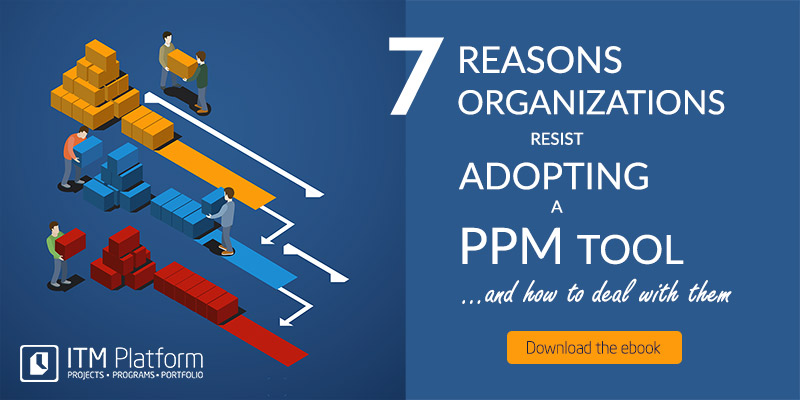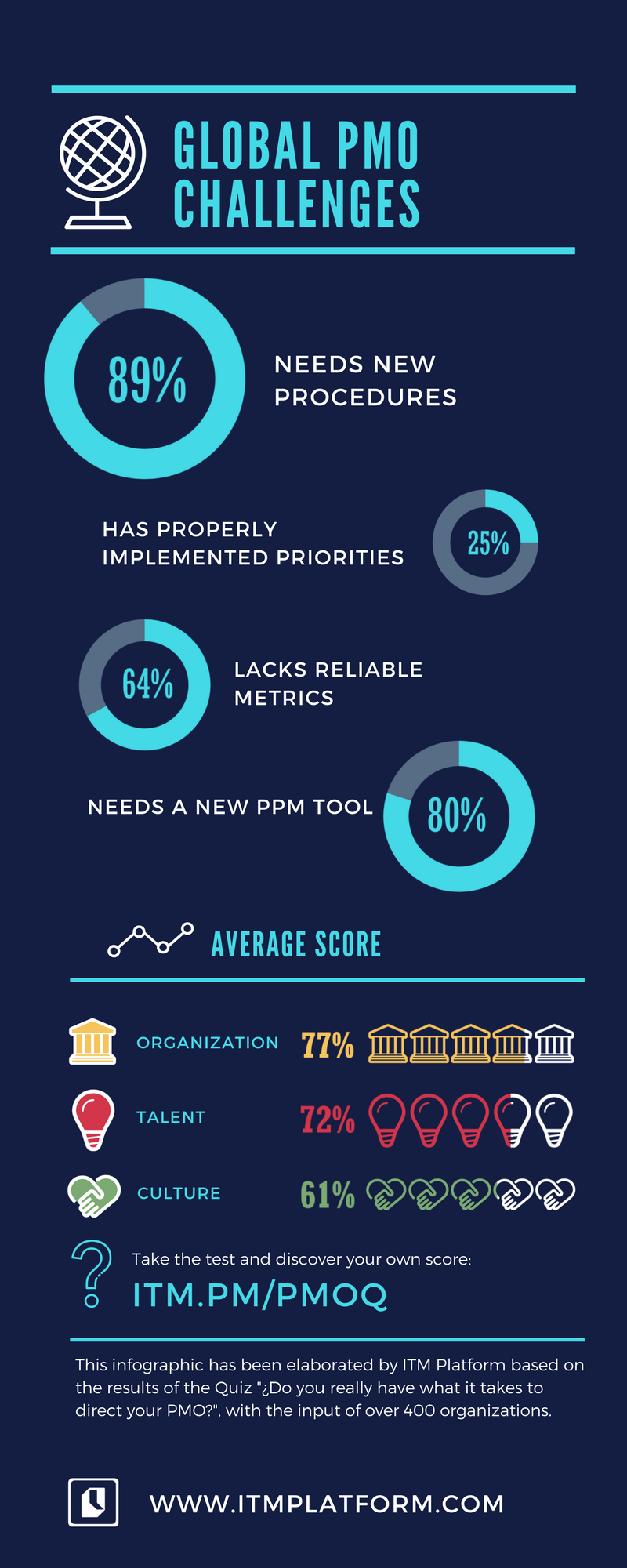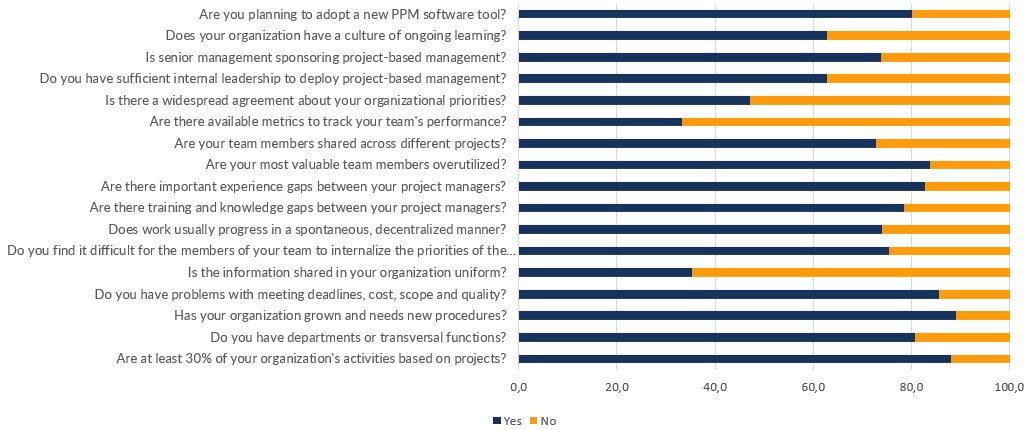 Corporate PMO = EPMO
Corporate PMO = EPMO
Corporate PMOs are also generally known as Enterprise PMOs or EPMOs. The term has been strengthened over time because it is understood that there are features common to all corporations, regardless of the nature of their products and services, which directly affect the challenges and attributions that the project office should assume.
An EPMO reports directly to one of the highest executives in the organization. Very often, there are other PMOs of lower rank, for example for the coordination of programs or a business unit; but none has the global reach of EPMO.
It has often been said that EPMOs are the most important instrument to ensure that the corporate strategy is truly executed in all areas of the organization. The EPMO would be, then, a catalyst, an engine oriented to promote the constant transformation in an environment whose natural inertia would lead, otherwise, to immobility.
Deploy your corporate PMO with ITM Platform. Request a personalized demonstration.
Responsibilities: start by deciding just initiatives
Every action has associated an opportunity cost. Even when it is clear what is being done, it is clear that many other possible actions are being discarded.
When, in addition, you work in a huge organization, the lack of alignment of the departments to the corporate strategy results in a very voluminous waste of energy.
For that reason, the EPMO approach is twofold:
- make sure that the right initiatives are started (doing the right things)
- make sure that they are managed properly (doing things right)
It is, therefore, a constant monitoring of the strategic alignment for all the work planned and underway.
Other responsibilities include, of course, traditional areas of the PMOs, such as training and counseling (of the other PMOs); value management, which is easy to lose sight of in highly complex environments; resource planning; Demand management or coordination among PMOs.
You can discover more in the White Paper: Project-Based Management (PBM)
Benefits of an EPMO
The benefits of an EPMO are similar to that of a smaller PMO, but with strategic orientation. The big difference is that the EPMO has the necessary governance structures to navigate and master the bureaucratic complexity and processes that can often become the biggest enemy of change in a corporate organization (from 5,000 employees).
In any case, it is worth reviewing those benefits:
- Increase in the number of projects delivered on time and in time
- Better strategic alignment between projects and business objectives
- Greater support for departmental projects, and with this, greater chances of success for the project, which can gather the required support at critical moments
- Less overlap of work between department
- Greater interdepartmental collaboration
- Greater visibility of corporate initiatives
- Higher ROI for the projects implemented, especially in non-financial terms
- More efficient delivery of projects –and faster to put new products and services on the market
- A better structured approach to the treatment of risks, including risk mitigation
Success factors of an EPMO
- Organic location, immediately below the General Management
- Change management according to good practices, so that the new EPMO is not perceived as a rival of the existing PMOs and projects managers
- Complementation of the managerial function: support in the decision-making, without robbing autonomy or generating political problems
- Autonomy with respect to functional areas, so that it does not depend on IT, Financial, Human Resources, etc.
- All subordinated PMOs must report, either directly or indirectly, to the EPMO. Otherwise, pockets of information are created that do not flow
- The competence profile should combine project management with the business vision: those who are part of the EPMO will advise managers in making critical decisions and train project managers to continue advancing as professionals
- No EPMO can work reasonably well if a high degree of standardization is not achieved.
References:

 Corporate PMO = EPMO
Corporate PMO = EPMO
 Project based
Project based




